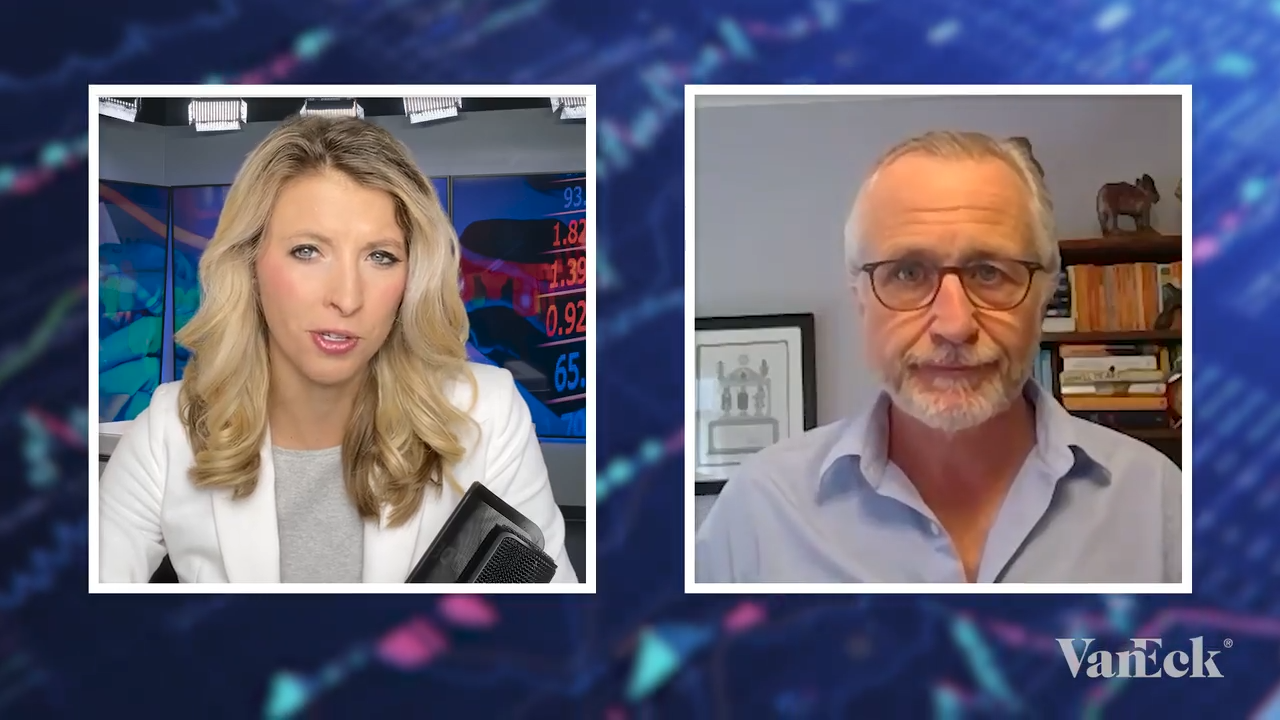Emerging Markets Bonds Then and Now: From Weakness to Resilience
16 March 2015
Watch Time 6:09
Emerging Markets Bonds Then and Now: From Weakness to Resilience
The Original Sin: Too Much External Debt
ERIC FINE: In the old days, what led to the EM crises? I define the old days as the 80s and 90s. That was the beginning of the EM debt asset class. Why were there so many crises? The simple reason is: debt composition. Too much dollar-denominated debt.Now, there was a reason behind it. There was low domestic savings and economic policy didn't encourage people to trust governments, banking systems, or central banks in these countries. This was the only market they had access to. The only place they could borrow from was the U.S. financial system. Whatever the reasons—and I do think the reasons were structural in nature—debt composition was mostly dollar-denominated. What does that mean? It means that when you have a crisis that puts pressure on your currency, your ability to repay debt decreases. You're in a vicious circle. Your currency weakens and it's harder for you to repay your dollar debt. Therefore your currency weakens more. It becomes even harder to repay your dollar debt. Thus it was a vicious cycle. Throughout this process that undermined governments’ ability to repay debt; governments used their central banks to defend their exchange rate to prevent a deteriorating ability to repay debt. Those efforts were very short-lived. Governments ended up even worse off because they ended up wasting a lot of reserves and still ending up with an inevitable default. It was essentially debt composition at fault because these countries were too dependent on dollar-denominated debt through the U.S. financial system.
The Washington Consensus: Economic and Financial Policy Reforms
FINE: What did emerging economies do to get themselves out of this? Many of them defaulted and reduced their amount of debt. To generalize, you had fiscal adjustments and dramatic reductions in budget deficits. There were structural reforms as well; letting insolvent banks and companies go bust is painful in the short term but healthy in the long term. You had the beginning of far more independent inflation-targeting central banks that would let the exchange rate float, which could be inflationary, but not if you have anchored inflation expectations via good fiscal policy, which is reform number one, essentially. The basic response was fiscal improvements, structural improvements, letting companies and banks default, and forcing restructuring and floating exchange rates, which did not feed through into long-term inflation expectations because fiscal changes anchored them. That was the basic policy response.
Results of EM Reforms
FINE: What's the "so what?" of the Washington Consensus? What did it do to the bond market? Number one is it resulted in higher reserves. Most of your debt is not dollar-denominated. It's mostly domestically-denominated. In domestic currency, you don't need to waste reserves to protect an exchange rate level. You'll thus see reserves in almost all the major EMs increase on a secular basis. That's very practical because it means dollar-denominated debt becomes a much safer asset class. Number two is it generally resulted in higher growth rates. Those were the two biggest implications of the Washington Consensus and the move away from the original sin of having too much dollar-denominated debt.
Global Financial Crisis Taper Tantrum Tests
FINE: What is the proof? How do we know whether this worked? With respect to the '08/'09 crisis, emerging markets were part of the answer. China was able to stimulate, i.e., increase fiscal and monetary stimulus in response to the crisis. In the old days, they'd have to do the exact opposite. They'd have to hunker down and suffer a much worse crisis. A number of the EM countries didn't even go through recession in one of the biggest financial crises in history. That's one general example of this working. The other one is the taper tantrum. The Fed signaled that it was going to end the latest phase of quantitative easing that it had engaged in and the market decided it was worried about countries with large current account deficits: Turkey, South Africa, India, Indonesia, and Brazil. What did all of those countries do? They let their currencies weaken and they let their interest rates rise. Even Argentina did that. That is not good if you own those currencies or those local currency bonds. If you own duration in local or if you own the currency, that's not good. However, if you owned dollar-denominated bonds, that was good. Moreover, weakening your currency and hiking interest rates directly addresses the current account deficit. All of a sudden, they weren’t afraid of letting their currencies weaken because it wasn’t going to turn into a vicious debt cycle. It would actually address the specific problem. Those to me are the two best examples of what this new policy framework means for emerging markets bonds.





